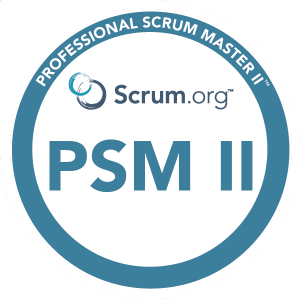Estimations are a cornerstone of Agile project management, offering teams a means to forecast effort, set expectations, and make informed decisions. However, the accuracy of these estimations can be significantly influenced by various cognitive biases. Understanding these biases and their impact is crucial for any team striving to improve their estimation practices and overall project outcomes. This article explores common biases affecting estimations and offers strategies to mitigate their influence.
Common Biases in Agile Estimations
1. Anchoring Bias
Anchoring bias occurs when individuals rely too heavily on the first piece of information (the “anchor”) they receive. In Agile estimations, this often happens when initial estimates, regardless of their accuracy, unduly influence subsequent estimates.
Mitigation Strategy:
Encourage team members to independently provide estimates before discussing them as a group. Use techniques like Planning Poker, where team members reveal their estimates simultaneously to avoid anchoring.
2. Optimism Bias
Optimism bias leads to overly positive forecasts, underestimating the time, effort, or resources required to complete a task. This can result from a natural tendency to be hopeful and overlook potential obstacles.
Mitigation Strategy:
Promote a culture of realistic assessment by encouraging the team to consider potential risks and past experiences. Use historical data to provide a more grounded basis for future estimates.
3. Confirmation Bias
Confirmation bias is the tendency to search for, interpret, and remember information in a way that confirms pre-existing beliefs. In the context of Agile estimations, this can mean focusing on data that supports a desired outcome while ignoring data that contradicts it.
Mitigation Strategy:
Foster a culture of critical thinking and encourage team members to challenge assumptions. Implement regular review sessions where past estimates are compared with actual outcomes to identify and learn from discrepancies.
4. Availability Heuristic
The availability heuristic is a mental shortcut that relies on immediate examples that come to mind. This can lead to overestimating the importance or likelihood of recent events, skewing estimations based on recent experiences rather than overall trends.
Mitigation Strategy:
Ensure a comprehensive review of past projects and use a broad data set for reference. Implementing a knowledge repository can help teams access a wide range of historical data rather than relying on recent experiences alone.
5. Groupthink
Groupthink occurs when the desire for harmony or conformity in a group results in irrational or dysfunctional decision-making. This can lead to consensus estimates that do not accurately reflect individual assessments.
Mitigation Strategy:
Encourage diversity of thought by inviting all team members to voice their opinions and concerns. Use structured estimation techniques, such as Delphi method, where anonymity is preserved to reduce the pressure to conform.
Improving Estimations
1. Use Relative Estimation Techniques
Relative estimation techniques, such as story points and T-shirt sizing, focus on comparing tasks against each other rather than assigning absolute values. This can reduce the impact of biases by leveraging the team’s collective experience and providing a more intuitive assessment method.
2. Implement Continuous Improvement
Regularly review and reflect on estimation practices. Conduct retrospectives focused specifically on the estimation process to identify what worked well and what didn’t. Encourage an environment where continuous learning and adaptation are prioritized.
3. Leverage Automated Tools
Consider using tools and software that assist in tracking and analyzing estimation data. These tools can provide objective insights and highlight patterns or anomalies that may be influenced by biases.
4. Training and Awareness
Educate the team about common cognitive biases and their potential impact on estimations. Awareness is the first step toward mitigation. Conduct workshops or training sessions to reinforce best practices and strategies for unbiased estimation.
Conclusion
Accurate estimations are vital for the success of Agile projects, yet they are inherently challenging due to various cognitive biases. By recognizing and addressing these biases, Agile teams can improve their estimation accuracy, leading to better planning, resource allocation, and project outcomes. Through continuous improvement, the use of relative estimation techniques, and fostering a culture of critical thinking and realism, teams can navigate the complexities of estimation and deliver value more effectively.
Discover more from Doron Katz
Subscribe to get the latest posts sent to your email.




